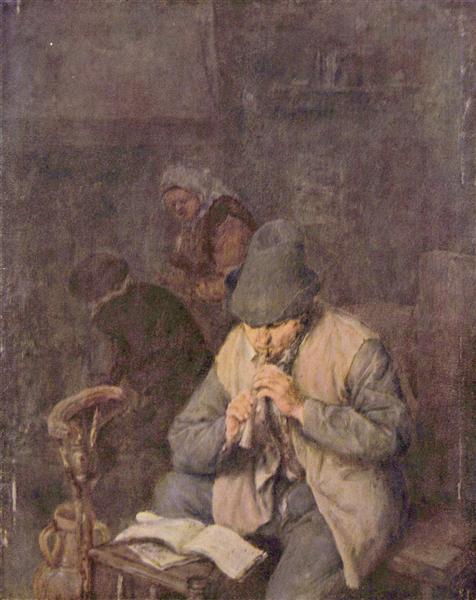Richibi’s Weblog
Tag: Opus 76 no 1 – Haydn
January 2, 2018
String Quartet no 1, Opus 18, no 1 – Beethoven

“Musician’s table“ (1914)
_____
Beethoven’s First String Quartet came
out much around the same time as
Haydn’s Opus 76, no 1, among six of
them in his set, Beethoven also had
six in his, however junior still, first
collection, his Opus 18, Beethoven
would’ve been going on thirty, Haydn
nearly seventy, though his spirit hadn’t
in any manner flagged, listen
but their differences are evident if you
lend a thoughtful ear
the format is the same, four movements,
inarguably contrasting, with formal
adherence to Classical norms, tonality,
tempo, and return, but the style is, in
Beethoven, being overtaken by the
substance, again inarguably
at dinner together, if I may continue my
earlier allegorical conceit, by the second
movement, Beethoven has already
entered politics, essentially, religion,
these four, the players, have a bone to
pick, and their conversation gets heated,
there’s a pause, a reconciliation, before
the third movement, dessert, as it were,
which is merrier initially, but later
remains contentious, liqueurs later, in
the final movement, are still not enough
to allow for a comfortable exit, however
might’ve been the serenity of the
intoxicating sherries, cognacs
Haydn would never have done that,
having grown up in the proprieties
of the Esterházys, his aristocratic
sponsors, courtesy would’ve been
of their essence
Beethoven’s is a call to arms, a
consequence of the French
Revolution, the birth of the
Romantic Period
you can hear it in the music
R ! chard
